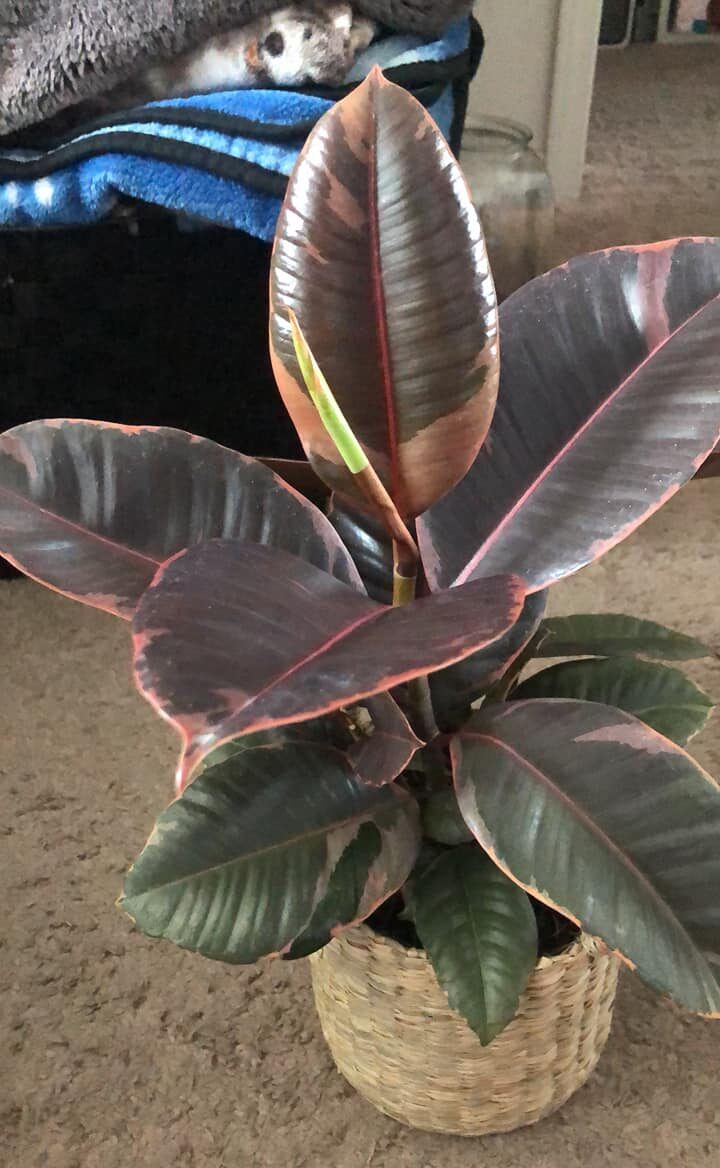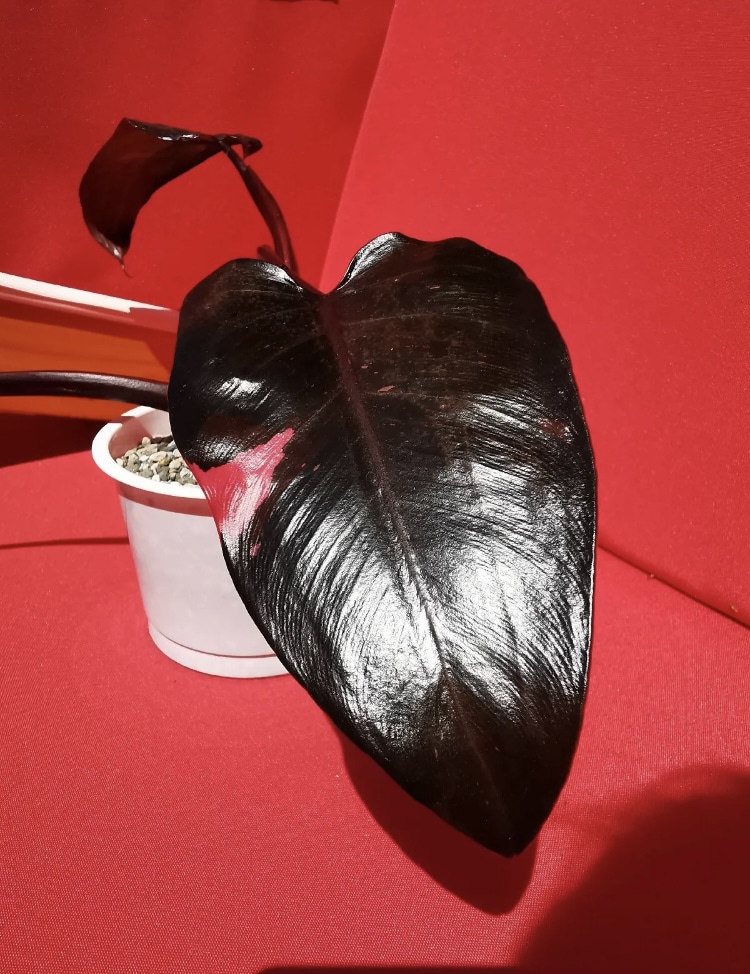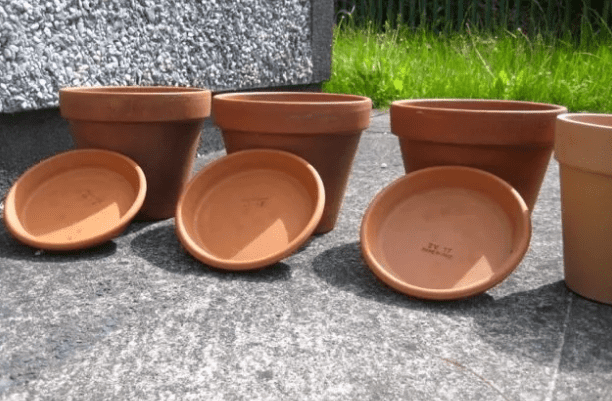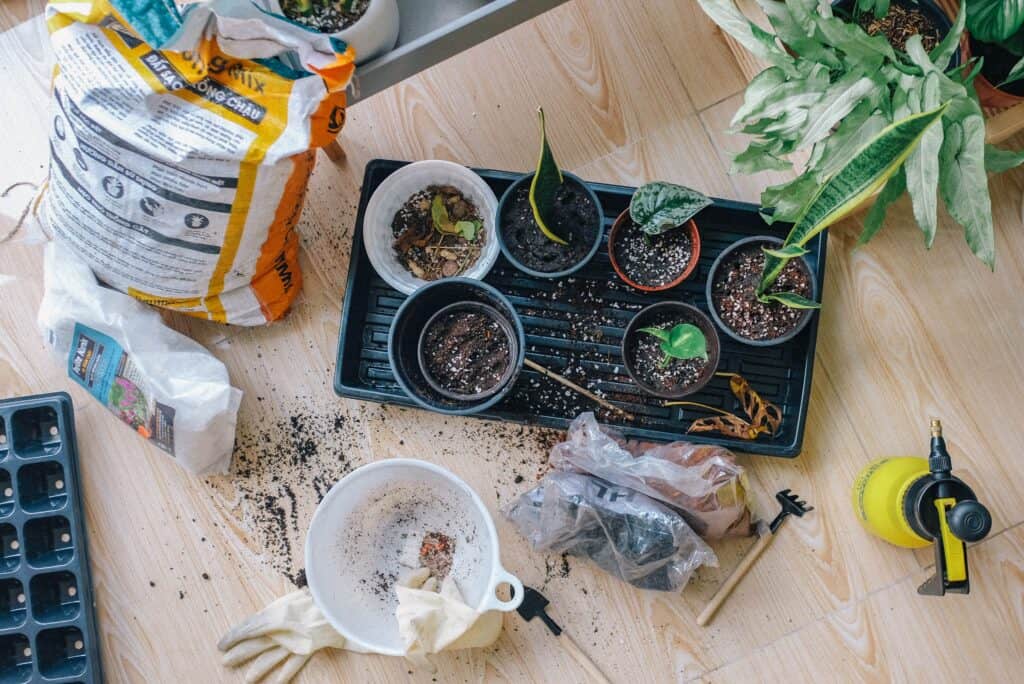Pink Princess Philodendron is the most exotic plant around the house, thanks to its signature variegated leaves.
Even growers cannot guarantee if their Pink Princess Philodendrons will give out pink leaves, making them more expensive.
Therefore, propagating the plant at home might save you a lot of money.

Voila! Transplant them into a larger pot once you get a healthy set of roots to see them grow bigger.
However, whether your plant will grow signature pink leaves will depend on many other factors.
Care to read on to find the best-propagating methods and aftercare to ensure a healthy plant with variegated pink leaves.
Table of Contents Show
Why Grow a Pink Princess Philodendron?
Pink Princess Philodendron is unlike any other tropical plant because you will not find it in a natural setting.
The same lush pink shade in green leaves gives its name “Pink Princess.”
Not many know this, but a single plant could fetch from $200 to $1,995 or more, making successful propagations even more promising.

However, growing the plant for its signature pink leaves is not easy.
Most growers fail to achieve the optimum pink shade on the leaves, making them virtually useless for sale.
A blog points out that, “There is no reason why the plants won’t produce pink leaves at some point; only the plants DNA knows when.”
Because it was initially grown from tissue culture, no one can guarantee pink leaves with other methods.
However, many growers point out that providing an accurate growing condition may help achieve the signature pink shade on the leaves.
Let us share more about propagating Pink Princess Philodendron.
When to Propagate Pink Princess Philodendron?
There is an ideal time to propagate a Philodendron plant for quick yields.
1. Propagating in Spring and Summer
Propagating Pink Princess Philodendron is best done in early spring when the plant actively grows and when you opt to repot the pink princess.
The plant will receive more light as the days get longer, ensuring healthy and quick root growth.
Although it is possible to propagate the plant in summer, it will only give a short growth before dormancy. Moreover, it will leave a premature plant to fend off alone in winter.
2. Propagating in Fall and Winter
Avoid propagating Pink Princess Philodendron in fall and winter when it becomes dormant.
Trying to propagate a dormant Philodendron may send it into transplant stress, even causing an untimely death.
Alternatively, you can take a cutting from the plant at the same time you decide to repot it, usually in spring or early summer.
Which Propagation Method Works Best?
While some Philodendron varieties grow well from seedlings, Pink Princess is relatively easy to grow from stem cuttings.
It may be impossible to propagate from seeds because the plant is grown from tissue culture.
Your only option is to take a set of healthy cuttings and propagate them in a different medium.
Moreover, trimming the plant for cuttings will help it become bushier and encourage variegation.
Note: It may be helpful, especially when the leaves have started to revert.
Stem Cuttings
Here is how you can take stem cuttings in a few easy steps
1. Choose an Appropriate Stem
Start with identifying the stems best for cuttings.
The old-growth will have aerial roots developed that will help for quick rooting.
2. Decide Where to Make the Cut
Choose where you will cut to get a healthy stem without damaging the plant.
Your cutting will grow from this node; hence, a stem with a node that already has tiny roots sprouting works best.

3. Cut Between Two Nodes
Using a pruning shear or a pair of scissors, cut the Stem between two horizontal or vertical nodes.
Too much Stem left under the node may quickly rot when propagating.
4. Prepare the Cutting
Remove the bottom leaves from your cutting and leave 2-3 leaves at the top.
Leaving the bottom leaves intact to the Stem will draw up the energy required for the rooting.
Next, set the cutting aside for 12-24 hours to allow the cut to thicken a bit. Then, follow the same step to take a cutting from the other plant sections.
Pro Tip: Instead of propagating a single stem, you should use multiple stem samples to increase the likelihood of succeeding.
Materials Required to Propagate Pink Princess
Care to arrange the right tools and materials when propagating your Pink Princess Philodendron.
Here is the list of essential materials and tools required.
- Pruning shear or propagation knife: To take cuttings
- Ethanol or 98% Alcohol: To sterilize the tools
- Potting mix: Prepare an appropriate homemade potting mix.
- 3-4 inch clay pot: For soil propagation
- One ltr clean, room-temperature water: For water propagation
- 500 ml transparent glass vase: For water propagation
- LECA balls: Alternative to soil propagation.
- Newspaper: To collect scraps and debris and to protect the surface.
How to Propagate Pink Princess Philodendron?
There are multiple ways to propagate Pink Princess Philodendron.
Luckily, each method works well help in stem cutting to root. And you will have a mature plant by the end of the year.
1. Propagation in Potting Mix
Here is a guided approach to propagate Stem cutting directly in a potting mix.
Step 1: Apply Rooting Hormone
Although optional, using a rooting hormone can be helpful to speed up the rooting process.
Get a bottle of rooting hormone and apply some on the trimmed end of the prepared cutting.
Step 2: Prepare the Medium
Prepare a nursery tray or small-sized container with an appropriate medium. It should contain perlite, vermiculite, and orchid bark.
Make tiny holes under the tray and fill it with the potting mix.

Leave about 1 inch of space between the top of the soil and the rim of the container.
Moisten the mix by watering it thoroughly. The mixture should be damp to the touch but not too wet.
Step 3: Plant the Cuttings
Gently insert the cutting into the soil mix right at the center. Ensure the bottom node is wholly immersed in the potting mix.
Cover the tray with clear plastic to keep the moisture and humidity in place. Poke holes in the plastic to encourage aeration.
Step 4: Place it in Indirect Sunlight
The rooting process requires a temperature of around 70°F (21°C). Therefore, please place it in a location that receives indirect sunlight.
Ensure not to place it in direct sunlight, burning the leaves and preventing rooting.
Step 5: Check for New Roots
Your stem cutting should start producing roots within two weeks when everything goes correctly.
However, let it stay for another two weeks before taking it out for inspection.
Gently slide it out and check for 1-2 inches-long roots.
Step 6: Prepare a Potting Mix
The final step is to transplant the rooted Stem into a pot with an appropriate potting mix.
Philodendron loves potting mix appropriate for aroids plants. Start with preparing one at home.
Mix 20% peat moss with 40% orchid bark, some horticulture charcoal, 10% perlite, 30% coco coir, and a handful of shredded sphagnum moss.

The organic mix improves drainage, and charcoal purifies the combination.
You can also use a commercial mix but check to ensure all the required ingredients.
Step 7: Transplant the Stem Cutting
Choose a pot 2-3″ bigger than the roots and fill it with the potting mix. Ensure it has adequate drainage holes at the bottom.
Poke a small hole in the potting mix and slide in the rooted Stem. Next, gently press the mixture to keep the branch in place.
Finally, water the plant thoroughly to keep the soil moist.
Pro Tip: Water your plant the day before transplanting to reduce the chances of transplant stress.
2. Propagation in Water
Propagating stem cutting in a jar of clean water is one of the easiest ways.
Also known as Hydroponics, you can entirely skip soil to root a stem in nutrient-rich water.
However, you should use distilled water instead of using regular water for hydroponics to work.

Here is a step-by-step guide to propagating Pink Princess Philodendron in water.
- Get a small jar or a glass filled with distilled water and submerge the cutting.
- Place the pot in a location that receives bright, indirect sunlight with warm surroundings.
- Replace the water every 5-7 days or when it becomes slightly dull.
- The Stem should start to root within 2-3 weeks. Slide it out to check for a healthy set of feeder roots.
- Once the feeder roots have grown at least 1 inch, transfer them to a potting mix and water thoroughly.
3. Propagation in LECA Balls
Propagating in a mix of LECA balls and water is another way to go.
LECA is a clay ball immersed in water to improve oxygen flow to a young plant’s roots.
Using LECA balls also ensures that the roots have something to hold onto in the water.
Step 1: Prepare the Medium
Unwrap the packet to take out the LECA balls. Rinse it under tap water and let it soak for a while.
Now, add them to a clean glass jar, filling 3/4 of the space. Then add distilled water to it.

Step 2: Plant the Cutting
Now, gently insert the cutting into the jar and keep it in place.
Do not rush when inserting it inside the jar to prevent damaging the bottom end. Instead, leave it for 3-4 weeks in a location that receives enough indirect sunlight.
Step 3: Inspect for Rooting
Check if the cutting has produced feeder roots. If not, let it rest for one more week.
You should find a healthy set of feeder roots 1 inch in length.
Step 4: Transplant to a Pot
Prepare the potting mix and add it to a pot 2-3″ larger than the roots. Fill the pot with the potting mix and add the cuttings.
Alternatively, you can add coco coir in the middle and bind them together with tape.
Adding coco coir will help retain moisture and act as a growing medium.
Tips to Take Care of Newly Potted Plant
A newly potted plant will require a conducive environment to ensure healthy, even growth.
A mature plant grown in the right conditions is more likely to give out variegated pink leaves.
1. Bright Indirect Sunlight
Pink Princess enjoys bright, indirect sunlight. The brighter the light, the higher the chances of getting sharp leaves.
However, ensure to keep them out of direct sunlight to prevent leaf burns
Alternatively, you can grow them under the appropriate light, such as LED Full Spectrum.
2. Warm Temperature
Temperature is another concern for Pink Princess Philodendron. As a tropical plant, it needs a warm temperature year-round.
Anything below 60 degrees Fahrenheit may damage the plant, even stunting its growth.
In winter, you can move them inside and use heat mats under the container to keep them warm.

3. Appropriate Watering
Pink Princess Philodendron does well in slightly moist soil that is not too wet.
However, it is far easier to overwater the plant than underwater it. Hence, water the plant every 7-10 days in the growing season and once in 15-20 days in winter.
Stick your finger into the soil to check the dryness and ensure you are not overwatering it.
4. High Humidity
A tropical plant enjoys high humidity and does best in humid conditions.
Planting them with other tropical plants is one way to boost the humidity.
Alternatively, you can use a room humidifier to provide adequate air humidity to the plant.
5. Regular Fertilizing
Pink Princess enjoys regular fertilizing in the growing season.
You can also use slow-release granular fertilizer.
To boost stem and foliage growth, supply it with house plant NPK fertilizer consisting of 20% of each component.
However, strictly cut back on fertilizing in early fall when the plant becomes dormant.

6. Control Pests
Pink Princess Philodendron is prone to a few pests common with tropical houseplants.
| Pests | Problems |
|---|---|
| Mealybug | They mostly infect root and foliage. They suck the sap from the leaves, leaving them wilted and discolored. |
| Aphids | Aphids are cricket-like creatures with back legs that suck up saps from the plant leaves and stems. When the infestation grows, your plant wilt and starts dying. |
| Thrips | Thrips are small, brown insects that mainly feed on leaves. They mainly infect overwatered plants or those placed in damp locations. |
| Scales | Scaly insects are tiny, waxy pests that infest on leaves. Yellow or rust-colored spots will start developing on the leaves, and the sap will begin drying up. |
Here is how you can effectively treat and prevent your plant from pests.
- Spray the plant with water from the hose to displace pests like aphids, scales, and spiders.
- Apply a homemade soap solution mixed with warm water to the plant to kill the pests effectively.
- Alternatively, you can also apply neem oil to remove and prevent pests.
- Use low-toxic insecticidal sprays like pyrethrin or insecticidal soaps if you want to use chemical methods to control pests.
- Inspect and use the aphid-free potting mix.
- Sterilize the pruning tools before and after use.
- Avoid bringing fresh cutting, weeds, and garden soil into the house.
Read more: How to Identify Insect Eggs on Leaves and Treat Pest Infestation?
7. Control Diseases
A plant sitting in excessively wet soil is susceptible to a few diseases.
| Disease | Problems |
|---|---|
| Root rot | Drooping and rapidly yellowing leaves, stunted growth and a rotten brown base is the primary sign of possible root rot. Brown and mushy texture on the root is another sign. |
| Rust Spots | Tiny specks or spots on leaves that range in color from orange to rusty-brown, brownish-yellow, purple and red. |
| Fungal Infection | A fungus that invites a range of plant diseases; mildew, fusarium wilt, rhizoctonia rot, etc. It may cause plant stress, stunted growth, and drooping leaves. |
Here is how you can effectively treat and prevent your plant from diseases.
- Dispose of the plant with severe root rot.
- Reduce watering for a week or two for slight root infections until the plant revives.
- Prune the infected Stem and leaves, repot the plant in a fresh soil mix, and sterilize the pot before reuse.
- Apply fungicide spray containing Flutriafol over the plant to remove rust fungus.
- Follow the watering schedule to prevent overwatering. Avoid overhead watering to avoid wetting the leaves.
- Avoid keeping your plant in low-light, damp locations that may witness excess moisture levels.

Conclusion
Propagating a Pink Princess Philodendron is relatively easy, often seeing more incredible successes.
However, getting the signature variegated leaves on each propagated plant cannot be guaranteed.
Due to insufficient lighting and temperature, the plant may also lose its variegated pink texture over time.
Therefore, ensure an optimum growing condition to encourage fuller and healthier leaves.
The healthier the leaves, the higher the chances of getting a signature pink shade.
Related Article: How to Care for Philodendron Prince of Orange?
